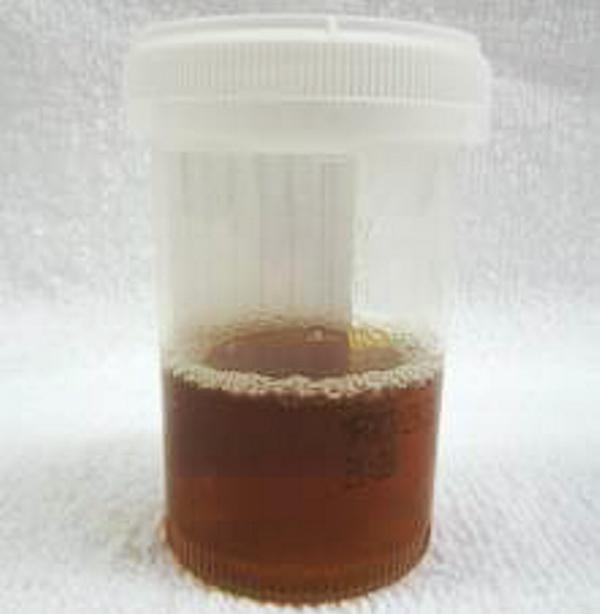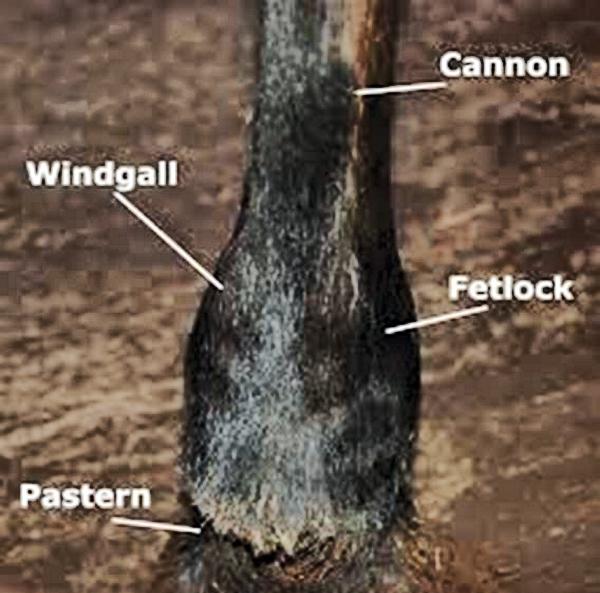Windgalls or windpuffs are small distensions of either the joint capsule or the digital flexor tendon sheath.
WINDGALLS PART 2
Do any windgalls cause lameness?
No, there is usually no lameness from windgalls unless they have been caused by arthritis in the fetlock joint or injury in the area, where they are a symptom of the condition.Generally, windgalls are benign in nature and are regarded as minor damage to the joint, appearing without pain, heat or lameness. These types of windgalls are particularly common in hard working horses.However, in the same way that bog spavin can be a symptom of degenerative joint disease in the hock joint, windgalls can be an indication of an underlying problem.Most windgalls are positioned above the fetlock. So a windgall type of swelling appearing below the fetlock or associated with pain, heat or lameness, should be treated with suspicion. These cases can be an indication of acute injury to the fetlock joint, a symptom of degenerative joint disease or damage to the digital flexor tendon. In these circumstances, a veterinary diagnosis via an ultrasound scan or x-ray is essential.Do windgall swellings vary in size?
Usually the swellings are similar in size between pairs of limbs, and symmetrical swellings are no undue cause for concern. On veterinary examination, these swellings in clinically normal horses are usually readily compressible and the fluid can be moved between different sections of the tendon sheath. For example, if the top part of the tendon sheath is compressed by finger pressure, then increased bulging will be seen on the back of the pastern.The amount of swelling may also vary with the environmental temperature which can cause enlargement and more filling in hot weather and they may become less obvious in cold weather.The degree of distension may also be influenced by exercise. Long-standing cases may tend to harden as a result of fibrosis in this area.What are the recommended treatments for windgalls?
In general treatment is ineffective. The alternatives include the following:Windgalls may be drained and injected by the treating vet. However since there is very little fluid involved in windgalls, as their title aptly implies, this approach is not very effective.Elasticated pressure bandages may be used but the results produced in these cases are temporary. To some extent, the size of the windgalls can be controlled by the application of stable bandages,(standing wraps), but daily use of stable bandages often results in ridges in the hair coat, a tell-tale sign of regular bandaging, especially in show horses. Also, it is important to note that improper bandaging techniques can cause damage to the leg so expert advice is essential on this.The use of special applications and sweats may also be recommended by the treating vet.Rest. Typically, a period of rest is prescribed, ranging from a few days to a number of weeks depending on the severity of the condition.
Cold therapy – If there is heat present, which is rare in windgalls, cold water hosing can help to disperse the swellings on the fetlock joint, as can applying the affected joint with a product such as Leg Clay. Anti-inflammatory drugs – If there is a mild lameness present, anti-inflammatory drugs may be prescribed by the vet. In severe cases, anti-inflammatory medication may need to be injected directly into the affected area.Exercise – After the initial rest period, horses which have no pain, heat or lameness usually respond well to a controlled exercise regime.Exercise bandaging – working wraps can be used during exercise to minimize the appearance of windgalls after a workout.Care should be taken to correctly diagnose the type and severity of windgalls at the early stages. In some cases very little treatment is needed, while others may require further veterinary investigation and medication.Therefore, it is strongly recommended that veterinary advice be sought in suspected cases of windgalls, particularly when pain and lameness are evident.


 This is a subscriber-only article
This is a subscriber-only article
 It looks like you're browsing in private mode
It looks like you're browsing in private mode










SHARING OPTIONS: